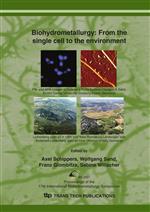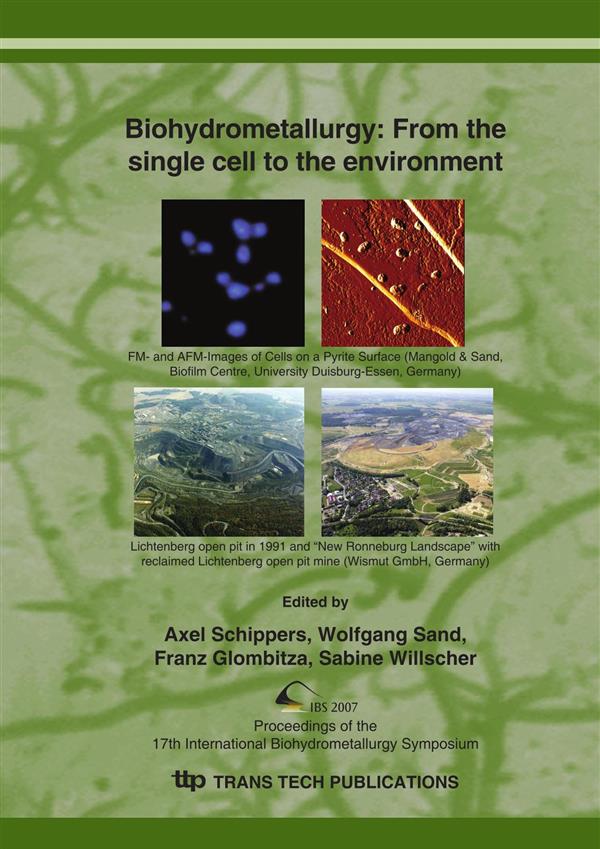Engineering Research
Materials Science
Engineering Series
Biohydrometallurgy: From the Single Cell to the Environment
Description:
Volume is indexed by Thomson Reuters CPCI-S (WoS).
Purchase this book:
Info:
Review from Ringgold Inc., ProtoView:
In addition to the 126 papers selected for the September 2007 symposium, a keynote speech opens each of the six sessions on bioleaching technology, environmental problems, bioremediation, interfacial processes, molecular and microbiology, and biosorption. The keynote talks describe the Wismut uranium mining rehabilitation project, recent advances in electron transfer between biofilms and metals, genomics for biomining, and biological removal of ions. Other topics include removing sulfur from oil shale, microbial leaching of metals from printed circuit boards, metabolism peculiarities in bacteria of genus Sulfobacillus, lead and gold removal by sugar beet pectin gels, and a novel fuel cell catalyst for clean energy production.

